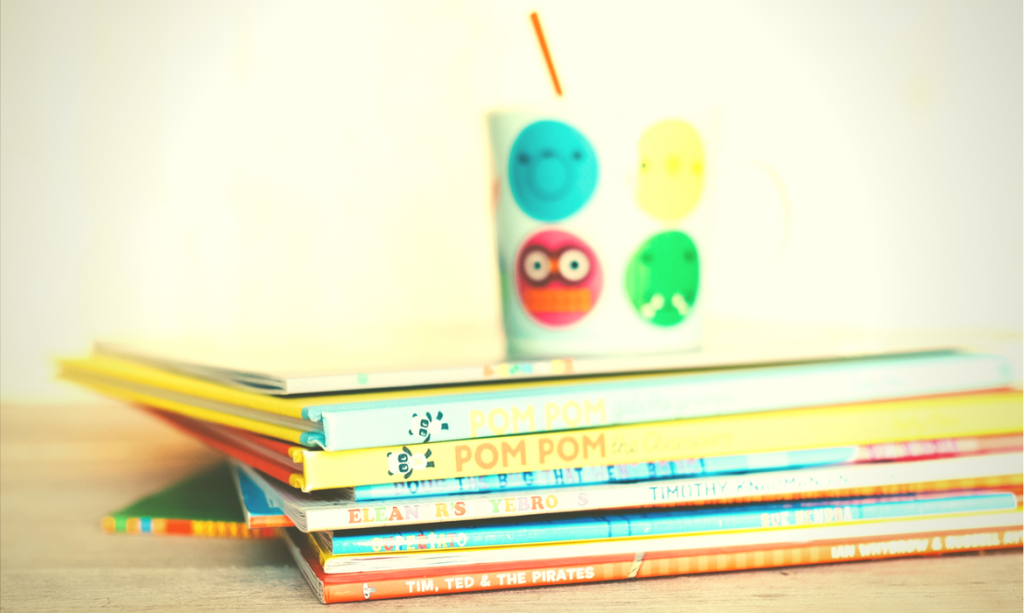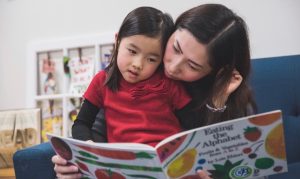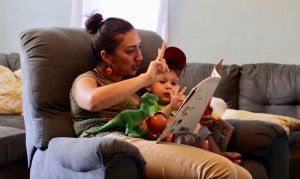Reading picture books to children is a joy. Reading can be a warm bonding experience for parent and child alike. Many parents find that the best part of the day is reading with their children before sleep. You and your child can enjoy the funny narratives, beautiful art, and silly characters in children’s books. Children can also learn a great deal from picture books—the sounds of letters, the meanings of new words, and interesting information about the world around them.
Storybooks can also stimulate math learning. Many picture books—even though they are not seen as “math” books—explore number, shape, spatial relationships, and other important early math topics.
Learning Numbers
Understanding numbers is one of the most important early math concepts a young child can grasp, and counting books are a great way to lay the foundation. At first, children can name some number words, but they may not recite them in order. Eventually, they learn to start from the beginning and count up to 10 or 20.
As you read a counting book with your child, you can help him or her practice verbally counting by naming the number words in order: Count with me! One, two, three, four, five, six . . . When you get to the end of the story, try saying the numbers backward: Ten, nine, eight, seven, six . . .
Counting Collections
Knowing the number words helps children count how many objects are in a small collection, another important development in mathematical thinking. In order to name how many objects are present, children must be able to coordinate their counting with the objects by naming only one counting word when they point to each individual object.
When they are still learning to count, children will often count some objects more than once. With practice, they will become better at keeping track of which objects they’ve already counted.
Finally, children must learn that the last number word they recite tells them how many objects they counted. When reading with your child, you can help them count the number of objects in the illustration by modeling how you point to each object only once and recite the number words in order. One, two, three, four, five. There are five rabbits!
Five Great Picture Books to Learn About Numbers and Counting
We recommend the following picture books for opportunities they provide to bond, to enjoy, and to stimulate your child’s understanding of numbers and counting.
Anno, M. (1977). Anno’s Counting Book. New York: HarperCollins.
In this wordless book, beautiful illustrations show how the land changes as we move through the seasons. Each page also shows the activities of the people and animals who live in the settings. As the book progresses from January through December, and from 1 to 12, you’ll see the numbers depicted in sets of trees, people, or other objects. The book can also be used to help children learn about addition.
Baker, K. (1999). Quack and Count. San Diego: Harcourt Brace.
This story introduces addition by showing different ways to arrange seven ducks. Children search for them on beautifully-illustrated pages and learn that whether there are three on one page and four on the other, or five on one page and two on the other, the total is still seven. This number, and all others (except one) can be composed and decomposed in different ways. This is a key feature of the commutative property of the whole numbers.
Ehlert, L. (1990). Fish Eyes: A Book You Can Count On. San Diego: Harcourt Brace Jovanovich.
Children practice counting from 1 to 10 as they encounter colorful fish on each page. The striking illustrations and straightforward concept make this an ideal counting book for younger children. The story also invites children to add one more fish on each page so that they can learn the beginnings of addition, namely counting on by one.
Rathmann, P. (1998). 10 Minutes Till Bedtime. New York: G.P. Putnam’s Sons.
This counting book follows a boy who has ten minutes to get ready for bed. A team of hamsters arrives to help him put away his toys, put on his pajamas, brush his teeth, and read a bedtime story. The story, art, and cumulative chaos are hilarious, and your child will enjoy counting backward, too.
Sayre, A. P., Sayre, J., & Cecil, R. (2003). One is a Snail, Ten is a Crab: A Counting by Feet Book. Cambridge, MA: Candlewick Press.
Children can practice adding by putting together the number of feet possessed by different animals. After they get to 10 feet, the story adds a new twist by showing how to count by 10s to get up to 100 crab feet. For example, 70 is shown by 7 crabs and 80 is 8 crabs or 10 spiders. This is a great story to practice counting, adding, skip counting by 10, and different ways to represent the same number.



